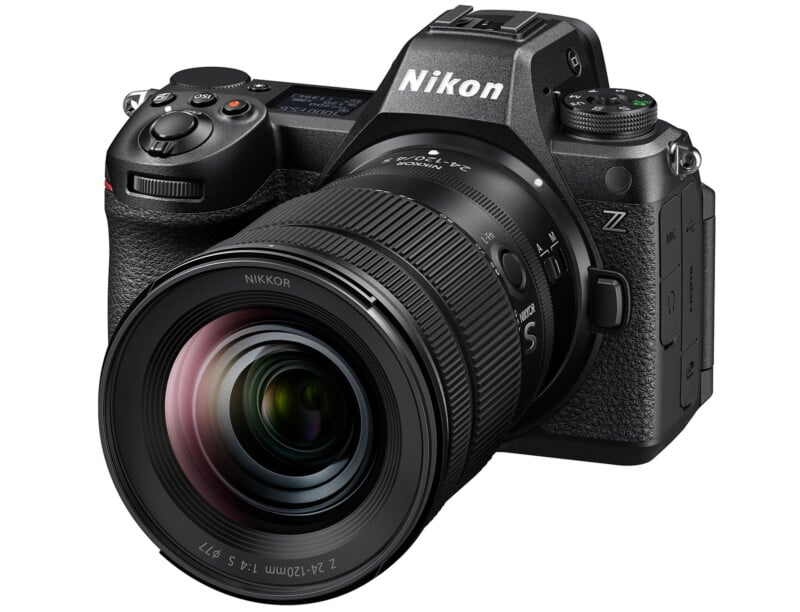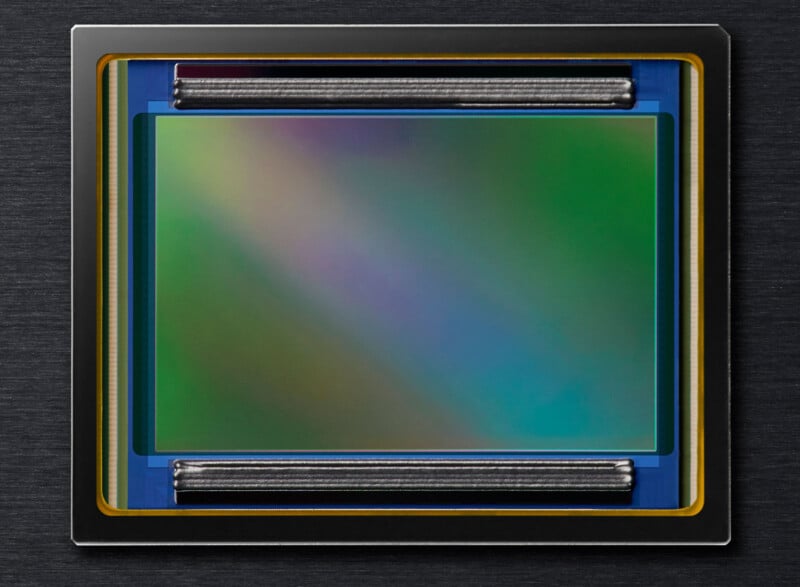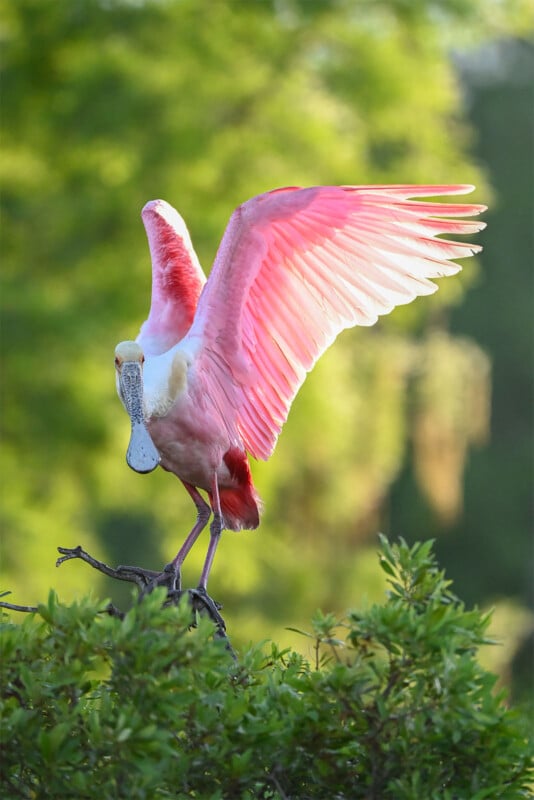![]()
After much anticipation and rumors, the long-awaited Nikon Z6 III has finally arrived. Based on its features and performance, it appears that people’s patience has been rewarded in a big way.
Z6 III Targets the Enthusiast and Pros With High-End Features and Versatility
Versatility is a significant part of the Nikon Z6 III’s sales pitch. Nikon says the “mid-range” market — think Canon EOS R6 Mark II, Sony a7 IV, and the Fujifilm X-T5 — is booming and comprises nearly 60% of all revenue in the interchangeable lens camera space and an even greater percentage of cameras on a per-unit basis. While Nikon has invested significant resources into its successful flagship Z9 and Z8 cameras, the company believes strongly in the importance of cameras that don’t eclipse the $3,000 price.

The original Nikon Z6 and Z6 II have been considered a success by Nikon, but the Z6 II is coming up on its fourth birthday, and a lot has changed in the field since then, especially concerning hybrid users and their demands for video features. While the Z6 III offers much by way of improvements for still photography — much more on that in a moment — it features a more significant focus on video than perhaps any Nikon camera to date.
“Offering a camera with this level of performance, reliability and an appealing price is a winning formula for all kinds of users who need a camera that will help them excel in every job or creative endeavor,” says Naoki Onozato, President and CEO, Nikon Inc. “The Z6 III represents much more than simply a generational update — it’s a major leap forward that’s going to establish a whole new concept of what a mid-range camera should be capable of.”
![]()
New 24.5-Megapixel Sensor
A new “partially stacked CMOS sensor” packing 24.5 megapixels of resolution drives much of the innovation across the board. The partially stacked sensor features multiple high-speed processing circuits stacked in layers above and below the photosensitive layer of the sensor.
This sensor design is not just new for Nikon, it is the world’s first interchangeable lens camera to use a partially stacked sensor.

While highly performant, a fully stacked image sensor is also costly. Nikon says a partially stacked design offers some of the benefits of a stacked sensor without all the expense. These benefits include faster autofocus performance, reduced rolling shutter, a smoother electronic viewfinder experience, swifter shooting speeds, and expanded video modes with higher frame rates.
Of course, while better versus the Z6 II, these improvements don’t mean that the Z6 III can match the Z8 and Z9 in all areas, as those cameras have a higher resolution, entirely stacked image sensor. That said, given that the Z6 II has fewer megapixels — 24.5 versus 45.7 — it does have some unique tricks, including FHD/240p video recording, something no Nikon camera has ever offered.
![]()
The Z6 III’s new sensor’s faster readout has resulted in a 3.5 times faster electronic shutter than its predecessor. However, Nikon says that rolling shutter performance is still not as good as the Z8/Z9. Nikon claims the Z6 III has the fastest scan rate of any camera under $3,999. The idea is not to match those more expensive cameras across the board but to provide many of their benefits to a new user segment at a lower price point.
![]()
For those who require more than 24.5 megapixels of resolution, the Z6 III includes a pixel-shift shooting mode. Using the camera’s in-body image stabilization system — rated for up to eight stops — the Z6 III moves the sensor slightly across up to 32 frames, resulting in a 96-megapixel image. This mode requires using Nikon’s NX Studio software on a computer. Nikon also says that people can use the mode to create higher-quality 24-megapixel frames with reduced noise and better color accuracy.
![]()
Speaking of “noise,” the Z6 III’s native ISO range is 100 to 64,000, tied for the highest native ISO in the Nikon Z system. The ISO can be expanded to 50-204,800.
An Inherited Autofocus System and Fast Shooting Speeds
The Nikon Z6 III inherits much from its more expensive siblings, including its autofocus system. While some AF performance relies upon a fully stacked sensor, the Z6 III’s partially stacked chip promises blazing-fast autofocus.
The Z6 III includes AI-powered subject detection across nine subjects, 3D Tracking, wide-area autofocus, and the ability to focus in meager light (down to -10 EV, a best for Nikon Z cameras). Nikon says the Z6 III’s autofocus system is approximately 20% faster than the Z6 II’s, and it has some new features.
![]()
Concerning subject detection, the Z6 III promises improved performance in changing light, better tracking across a broader range of subjects, and more accurate focus when detecting small subjects within the frame. The camera can detect humans, animals, and a range of vehicles.
Between the autofocus performance and continuous shooting speeds, the Z6 III is a solid choice within Nikon’s lineup for sports, action, and wildlife photography. Unlike the Z8 and Z9, the Z6 III still includes a mechanical shutter, which can be used to shoot at up to 14 frames per second (full-resolution RAW+JPEG with AF/AE).

By switching to the electronic shutter and its reduced rolling shutter compared to the Z6 II, photographers can shoot at up to 20 frames per second with RAW recording.
For even more speed, there are C30, C60, and C120 modes to shoot full-resolution JPEG images with AF/AE tracking at 30, 60, and 120 fps. It is worth noting that the 120 fps mode includes a crop, although it is not quite a DX (APS-C) crop. The C120 drive mode captures 11-megapixel JPEGs.
Another JPEG-only feature is a new pre-release capture mode, which has up to one second of buffer depth before pressing the shutter and will help photographers not miss any critical moments. This mode is available at up to 120 fps shooting speeds.
![]()
The Nikon Z6 III has dual card slots: one CFexpress Type B, and a UHS-II SD card. A CFexpress Type B card is vital to achieve the best possible performance when using the Z6 III, especially for high-speed shooting.
The Nikon Z6 III’s vibration reduction (VR) system also offers improvements. While the Z6 II’s in-body image stabilization is rated for up to five stops of shake correction, the Z6 III ups the ante to eight stops. The camera also includes Focus Point VR, which prioritizes stabilization on the active focus point.
Body Design: New Super-Bright, High-Res Electronic Viewfinder
The Z6 III’s overall look and feel are familiar, but the camera’s user experience has undergone some important changes.
![]()
The most significant change is a brand-new electronic viewfinder. The EVF is Nikon’s brightest yet, reaching up to 4,000 nits of peak brightness. Not only is it the brightest EVF of any mirrorless camera but it is also approximately 33% brighter than the Z9’s EVF. The 5.76-million-dot EVF also has an HDR-ready color gamut (DCI-P3), which Nikon says is its widest. By the way, the Z6 II’s EVF has 3.69 million dots, so there is a resolution improvement on offer as well.
![]()
The Z6 III also includes a vari-angle 3.2-inch rear LCD, which can be used as a front-facing display for selfies and during video recording. The display has approximately 2.1 million dots, the same size and resolution as the Z6 II’s non-vari-angle panel.
Video Improvements Headlined by 6K Internal RAW Recording
The partially stacked sensor pays dividends in video, too. With this faster sensor and the same EXPEED 7 processor as the Z8 and Z9, the Z6 III can internally record 12-bit 6K/60p N-RAW footage and 6K/30p ProRes RAW. For those wondering why RED RAW wasn’t included, Nikon already said it intends to keep the two formats separate, at least for now. The internal 6K recording is pixel-for-pixel, using a full-sensor readout. The Z6 III also records 10-bit 5.4K ProRes 422, which also uses the full width of the image sensor.
![]()
While most of its video output options are capped at 4K, 5.4K and 6K resolutions offer additional freedom to crop during post-processing, something the Z9 also offers through its 8K recording.
The Z6 III also promises speed. The camera can shoot 4K/120p footage (N-RAW) with a DX (1.5x) crop factor. The FHD/240p video recording option is H.265 codec and uses about 95% of the sensor’s width, so it does come with a slight crop factor.
![]()
As for recording limits, Nikon says the Z6 III sports a thermally efficient design, allowing continuous 4K/60p recording for up to 125 minutes (an external power supply is required for this duration). The maximum movie recording time at the tested 23 degrees Celcius (73.4 degrees Fahrenheit) is two hours and five minutes.
Pricing and Availability
The Nikon Z6 III will be available in late June for $2,499.95 (body only). The camera will also come in a kit with the Nikkor Z 24-70mm f/4 S lens for $3,099.95.
![]()
Alongside the Z6 III, Nikon unveiled a new MN-N14 power battery pack. This will arrive sometime this summer for $359.95 and is backward-compatible with the Nikon Z6 II and Z7 II cameras.
Image credits: Nikon
